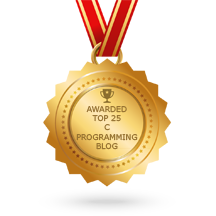Time: 3 hours
Full Marks: 75
Pass Marks: 27
Section A (Botany)
1. Answer any seven questions in very short. (1 × 7 = 7)
a. Write the function of xylem.
b. Name the components of a nucleotide.
c. Give one example of polygenic inheritance.
d. Define genetic code.
e. What is polyploidy?
f. Mention two importance of vegetative propagation.
g. Give two examples of entomophilus plants.
h. Define genetic engineering.
i. Define tissue culture.
j. What is the main source of green manures?
2. Answer any five questions in brief. (3 × 5 = 15)
a. Give the well-labelled diagram of monocot embryo. (Description is not required)
b. What are the differences between dicot stem and monocot stem?
c. Explain the types of transpiration in plants.
d. Differentiate between phenotype and genotype.
e. What did you understand by Mendel’s 9:3:3:1 ratio?
f. Differentiate between self and cross fertilization.
g. Show with the diagrams the development of dicot embryo. (No description required)
h. Mention the applications of genetic engineering.
3. What is secondary growth? Discuss the activity of cambium in secondary growth of dicot stem. (7.5)
OR
Describe the light dependent steps of photosynthesis.
4. “DNA is the hereditary material”, explain it with an experiment. (8)
Section B (Zoology)
1. Answer any seven questions in very short. (1 × 7 = 7)
a. In which kind of animal tissue you find the mast cells.
b. Name the two sex linked diseases in human.
c. Define gametogenesis.
d. Name any two enzymes which are responsible for protein digestion.
e. Define the term ‘deamination’.
f. Which part of human brain is the centre of intelligence?
g. Name the causative agent of typhoid fever.
h. What does ISD cause?
i. What is the role of surrogate mother in test tube baby?
j. Differentiate heterograft and autograft.
2. Answer any five questions in brief. (3× 5 = 15)
a. Describe the structure of areolar tissue.
b. If a red-eyed male Drosophila is mated with a white-eyed female, what will be the phenotype of male and female in F1 progeny?
c. How is the notochord formed in the embryo of frog?
d. What is vitamin? Mention the functions of fat-soluble vitamins.
e. Draw a labelled sketch of internal structure of human kidney.
f. What will be the problems of over human population? Suggest some measures to control over population.
g. Define amniocentesis. Mention its positive and negative effects.
3. Explain the structure and function of human brain. (8)
OR
Explain the respiratory organs of human being.
4. What are communicable disease? Discuss the causative agents, symptoms, effects and control measures of any one communicable disease you have studied. (7.5)

